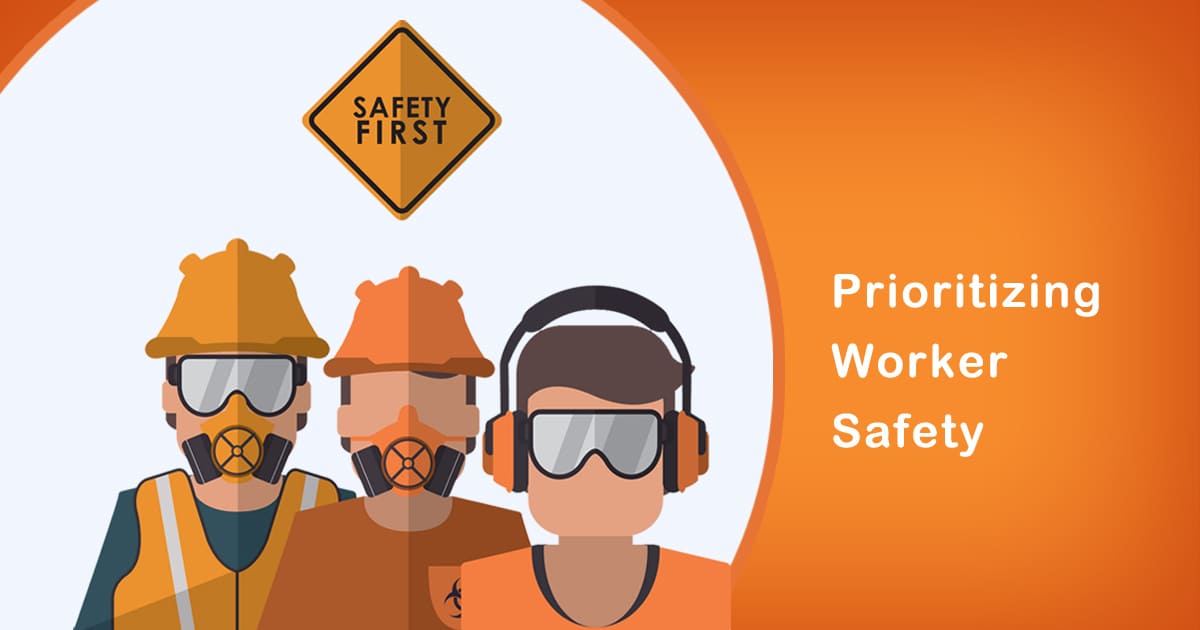Introduction:
Safety is an essential factor for any workplace, especially in the industrial sector. In India, worker safety is a crucial concern as it is a developing nation with a vast industrial base. The Indian industries face numerous challenges in managing worker safety effectively. The country witnesses a high number of occupational accidents every year, leading to injuries and fatalities. As per the data released by the National Crime Records Bureau (NCRB), 4,132 workers lost their lives in industrial accidents in 2019. To ensure a safe working environment, it is essential to prioritize worker safety by conducting risk assessments and implementing accident prevention measures.
Importance of Risk Assessment:
Risk assessment is the process of identifying potential hazards in the workplace and taking necessary measures to eliminate or reduce the risks. It is a crucial step towards ensuring worker safety in the industrial sector. The industrial sector in India is diverse and comprises numerous sub-sectors, each with unique risks and hazards. Therefore, conducting risk assessments specific to the industry, sub-sector, or process is essential.
In India, the Factories Act, 1948, mandates the need for conducting risk assessments in factories. The assessment must be carried out by a competent person, and the findings must be documented. However, it is not mandatory for other industries to conduct risk assessments. Conducting risk assessments in non-factory industries, such as construction, mining, and agriculture, can significantly reduce accidents and injuries.
Prevention of Accidents:
Accidents can occur due to various reasons, such as human error, equipment failure, or inadequate safety measures. Therefore, implementing accident prevention measures is essential to ensure worker safety in the industrial sector.
The use of Personal Protective Equipment (PPE) is a common accident prevention measure. PPE includes helmets, gloves, safety shoes, and goggles, among others. In India, PPE is mandatory in industries where the risk of injury is high, such as construction and mining.
Training and education are other crucial accident prevention measures. Workers must be trained in the proper use of equipment, emergency procedures, and hazard identification. In India, the Occupational Safety, Health and Working Conditions Code, 2020, mandates the need for providing training to workers.
Implementation of technology, such as sensors and automation, can also significantly reduce accidents. Sensors can detect hazardous conditions, such as high temperature or toxic gases, and alert workers to take necessary precautions. Automation can reduce human error and improve safety in processes that involve heavy machinery.
Role of Government:
The Government of India has taken several steps to ensure worker safety in the industrial sector. The Factories Act, 1948, and the Mines Act, 1952, are some of the key legislations that mandate the need for ensuring worker safety. The Occupational Safety, Health and Working Conditions Code, 2020, is a recent legislation that consolidates and rationalizes various labour laws related to worker safety.
The Directorate General Factory Advice Service and Labour Institutes (DGFASLI) is a government agency that provides technical support and advisory services to ensure worker safety. The agency conducts research, provides training, and disseminates information related to worker safety.
Conclusion:
Worker safety is a crucial concern in the industrial sector, especially in developing nations like India. Conducting risk assessments, implementing accident prevention measures, and providing training and education are some of the key steps towards ensuring worker safety. The role of the government in ensuring worker safety is also significant. The government must ensure that appropriate legislation is in place and that adequate resources are available to enforce the laws. A safe working environment not only ensures worker well-being but also contributes to the productivity and growth of the industry. Therefore, prioritizing worker safety must be a key objective for all industrial organizations.








